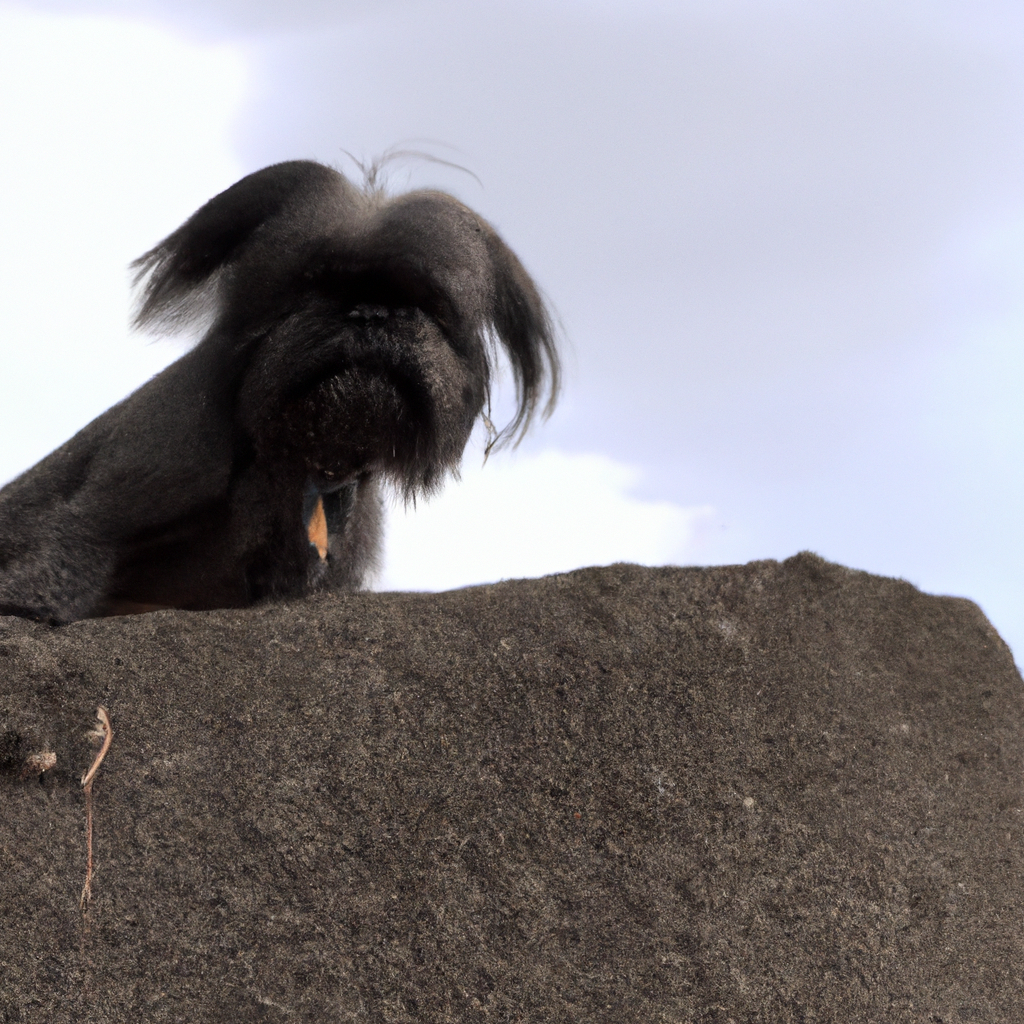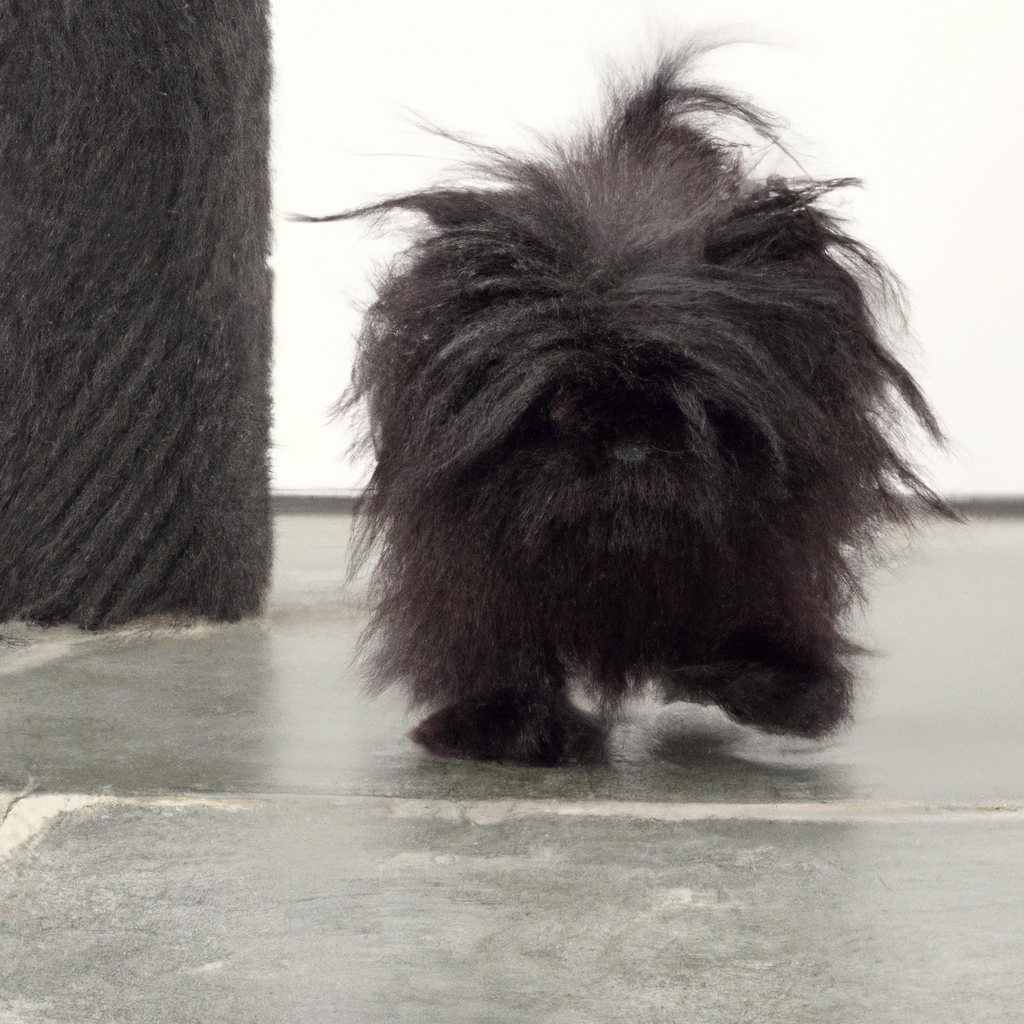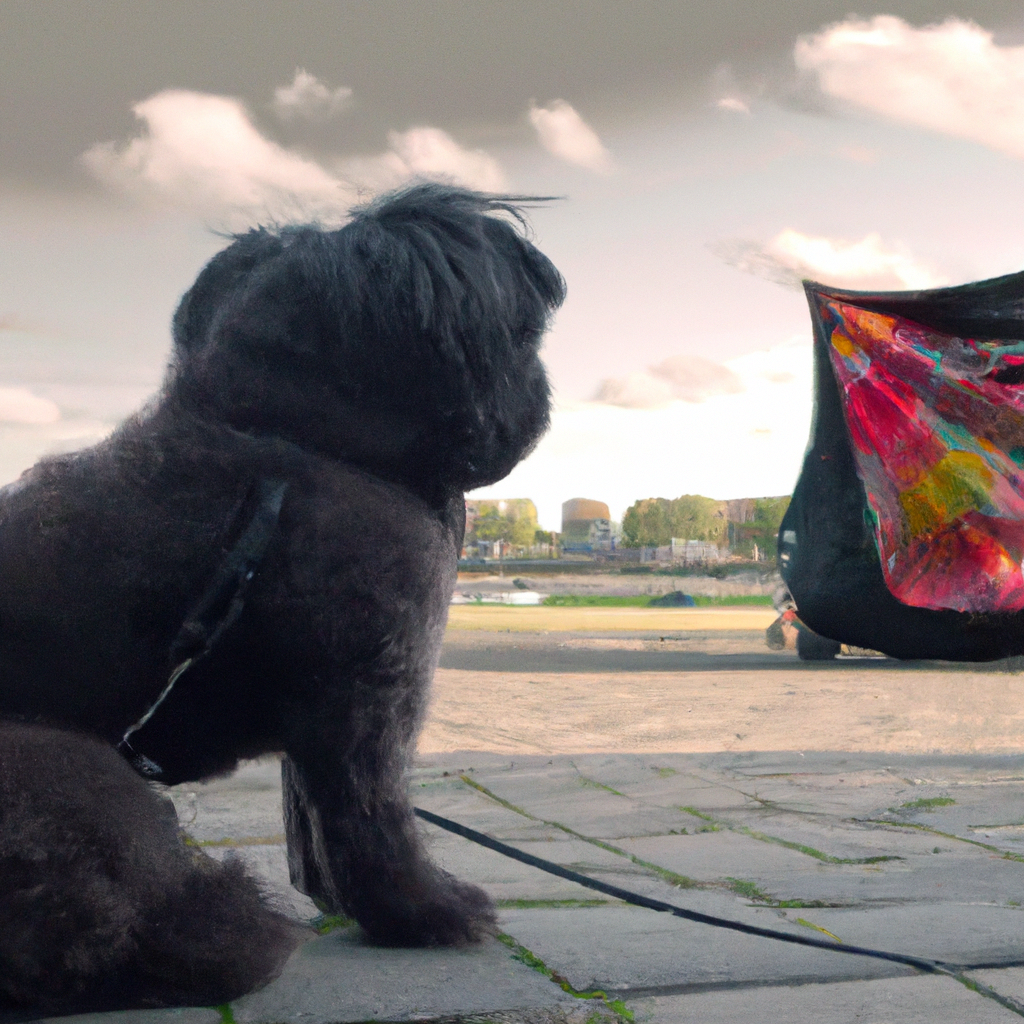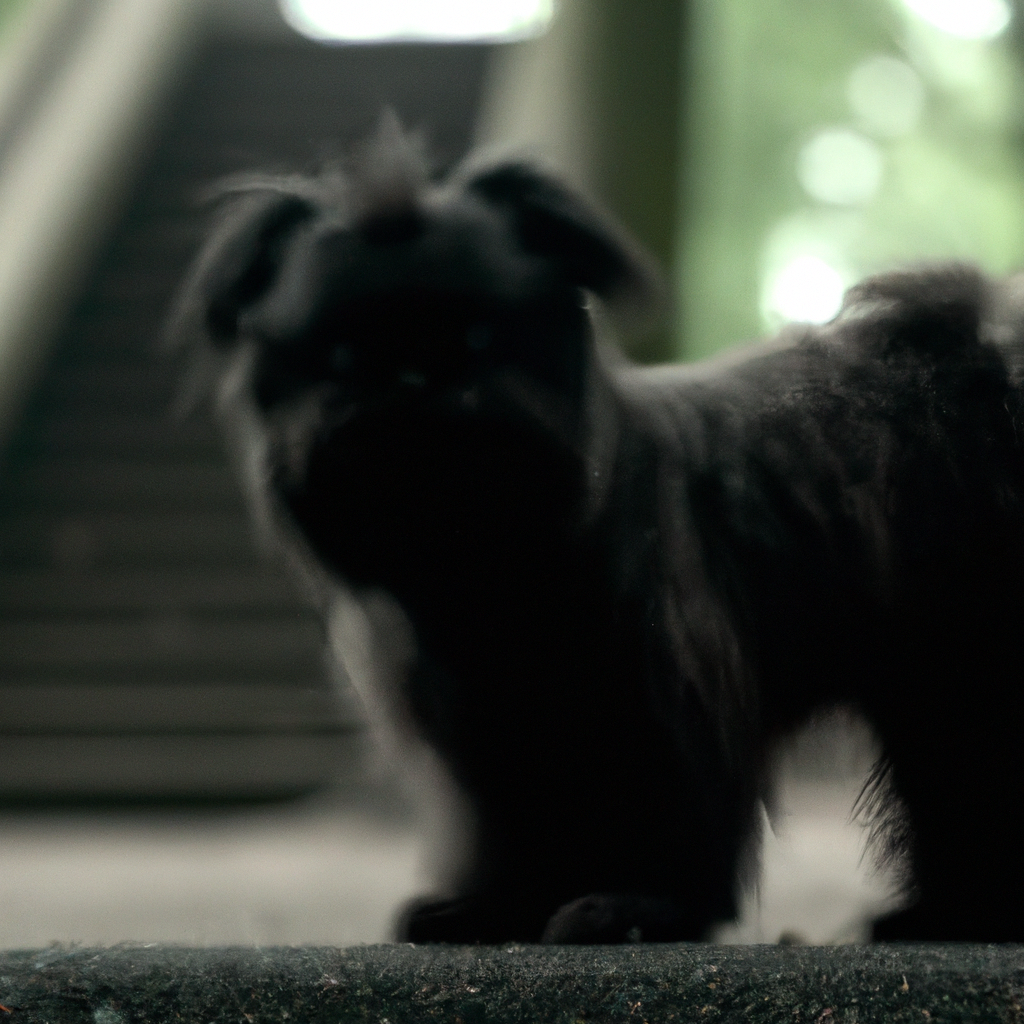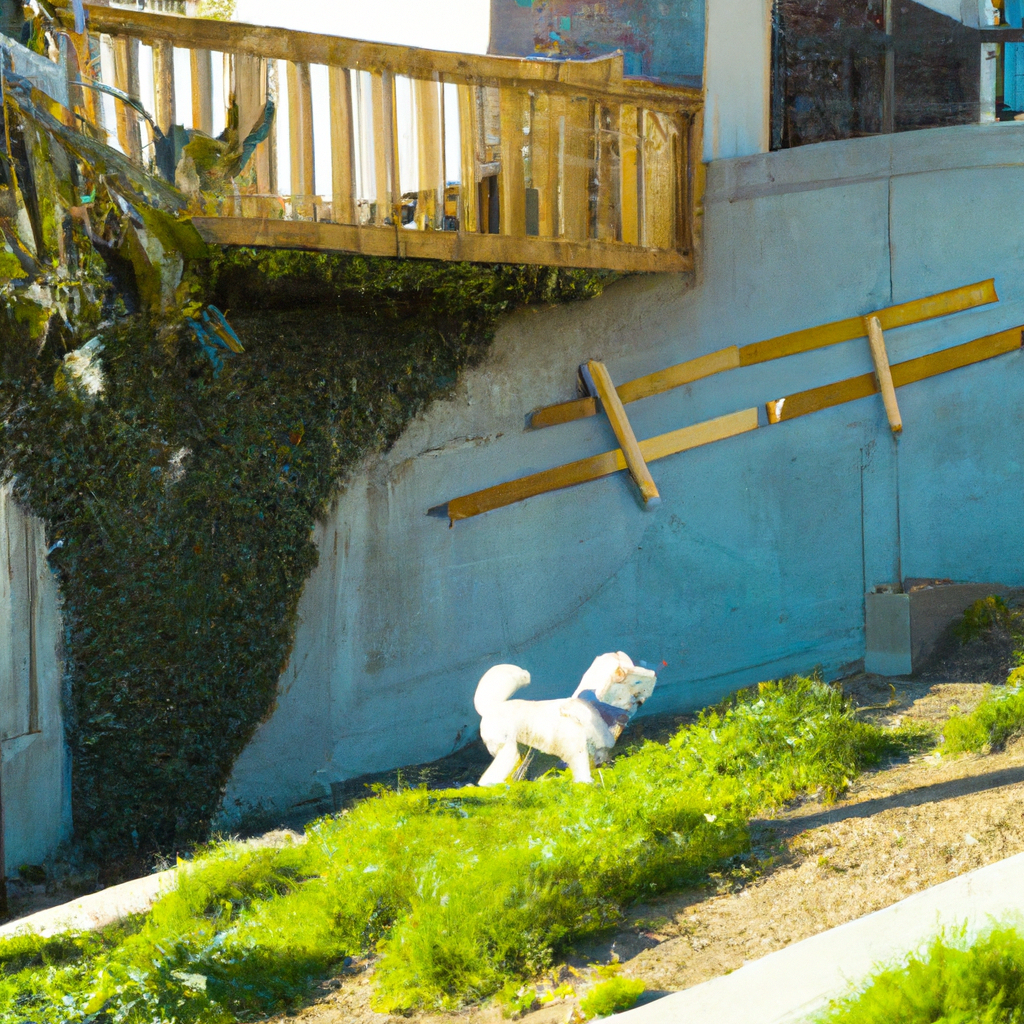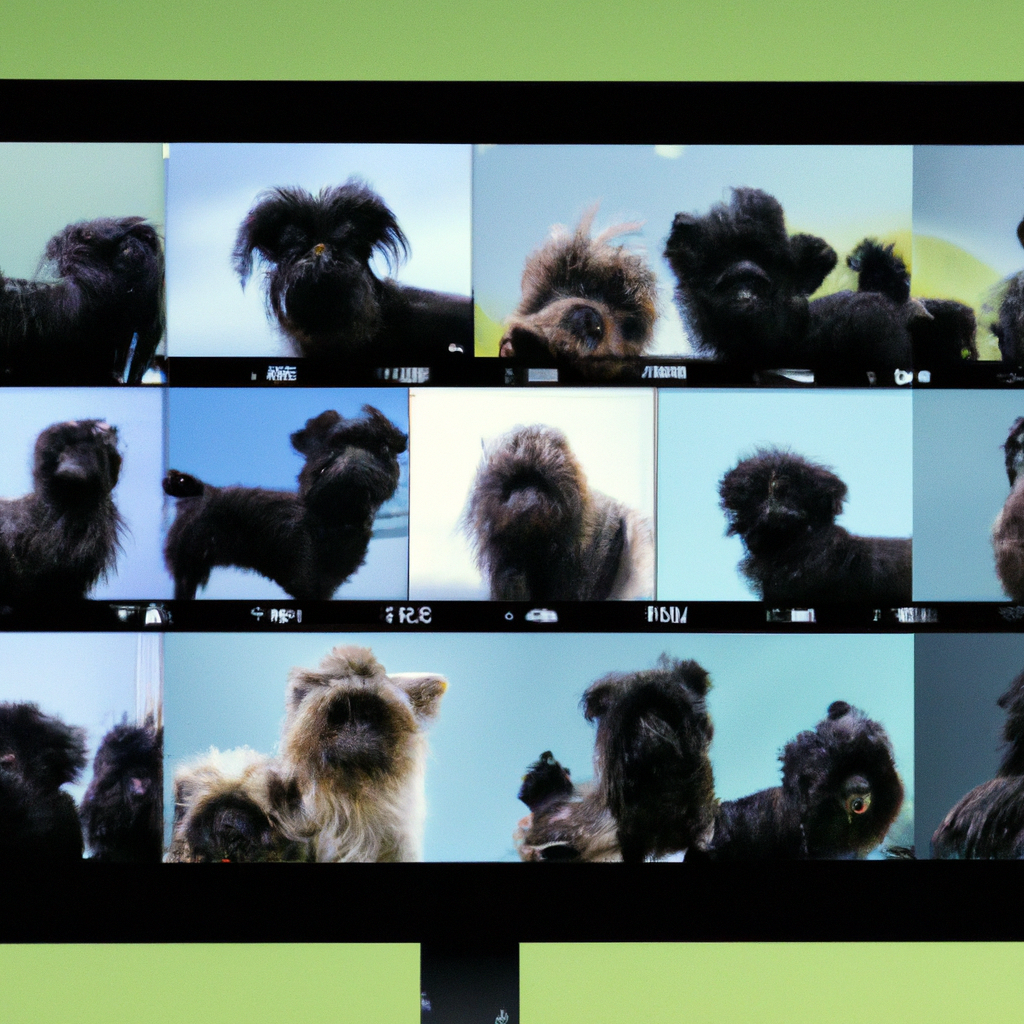Remembering Affenpinschers that Starred in Movies is an intriguing topic that delves into the world of cinema and the unique roles played by this distinctive breed of dog. Affenpinschers, with their distinctive monkey-like faces and playful personalities, have made notable appearances in several films, captivating audiences with their charm and acting prowess. This introduction will explore the various movies in which Affenpinschers have starred, highlighting their contributions to the cinematic world and the unforgettable performances they have delivered.
Famous Affenpinschers in Hollywood: A Retrospective
Affenpinschers, with their distinctive monkey-like faces and playful personalities, have long been a favorite among dog lovers. But did you know that these adorable little creatures have also made their mark in Hollywood? That’s right, Affenpinschers have starred in several movies, charming audiences with their unique looks and endearing antics. Let’s take a trip down memory lane and remember some of the most famous Affenpinschers that have graced the silver screen.
Perhaps the most well-known Affenpinscher in Hollywood is the lovable Otis from “The Artist.” This 2011 silent film, which won five Academy Awards, including Best Picture, features an Affenpinscher named Uggie playing the role of Otis. Uggie’s performance was so impressive that he won the Palm Dog Award at the Cannes Film Festival, a prestigious honor given to the best canine performance in a film. Uggie’s charm and talent were undeniable, and he quickly became a beloved figure in Hollywood.
Another Affenpinscher that made a splash in the movies is Max from “The Mask.” In this 1994 comedy, Max, played by an Affenpinscher named Milo, is the loyal companion of Stanley Ipkiss, played by Jim Carrey. Max’s mischievous antics and expressive face added a delightful touch to the film, making him a favorite among audiences.
In the 2008 film “Water for Elephants,” an Affenpinscher named Queenie plays a significant role. Queenie, the pet of the circus owner, is a constant presence throughout the film, adding a touch of whimsy and charm to the otherwise dramatic storyline. Queenie’s performance was so memorable that she was nominated for a Golden Collar Award, which recognizes outstanding performances by dogs in film and television.
Affenpinschers have also made appearances in several animated films. In “Lady and the Tramp,” an Affenpinscher is seen among the dogs in the pound, while in “101 Dalmatians,” an Affenpinscher is one of the dogs that helps Pongo and Perdita rescue their puppies. These animated Affenpinschers may not have had starring roles, but their presence added a touch of realism and diversity to the canine casts.
While Affenpinschers may not be as common in Hollywood as some other breeds, their appearances in films have left a lasting impression. Their unique looks, combined with their playful and mischievous personalities, make them perfect for roles that require a dog with a bit of character. And let’s not forget their talent; from Uggie’s award-winning performance in “The Artist” to Queenie’s memorable role in “Water for Elephants,” Affenpinschers have proven that they can hold their own against their human co-stars.
So, the next time you’re watching a movie and a small, monkey-faced dog appears on screen, take a moment to appreciate the Affenpinscher. These little dogs may not be Hollywood’s biggest stars, but they’ve certainly made their mark on the film industry. And who knows? The next big Affenpinscher star could be just around the corner.
The Affenpinscher’s Journey: From Silver Screen to Our Hearts
The Affenpinscher, a small, quirky breed of dog, has a long history of stealing the spotlight in the world of cinema. These charismatic canines, with their distinctive wiry coats and expressive faces, have been captivating audiences for decades. Their journey from the silver screen to our hearts is a testament to their unique charm and undeniable talent.
The Affenpinscher’s cinematic debut dates back to the early days of Hollywood. The breed’s first notable appearance was in the 1937 film “Topper,” where an Affenpinscher named Mr. Atlas played a ghost dog. His performance was so memorable that it set the stage for future Affenpinscher stars.
In the 1950s, an Affenpinscher named Bandit starred in the film “The Littlest Hobo.” Bandit’s performance was so compelling that it led to a surge in the breed’s popularity. People were drawn to the Affenpinscher’s lively personality and distinctive appearance, and many wanted to bring a little piece of Hollywood magic into their own homes.
As the years went on, Affenpinschers continued to make their mark in the film industry. In the 1980s, an Affenpinscher named Max stole the show in the film “Gremlins.” Max’s performance was so captivating that it led to a renewed interest in the breed. People were once again reminded of the Affenpinscher’s unique charm and undeniable talent.
In recent years, Affenpinschers have continued to shine on the silver screen. In the 2012 film “The Artist,” an Affenpinscher named Uggie played a pivotal role. Uggie’s performance was so impressive that he won the Palm Dog Award for best performance by a canine at the Cannes Film Festival. This marked a significant milestone in the Affenpinscher’s journey from the silver screen to our hearts.
The Affenpinscher’s journey is not just about their appearances in films, but also about the impact they have had on audiences. These small dogs, with their big personalities, have a way of capturing people’s hearts. They remind us of the joy and laughter that pets can bring into our lives. They show us that even the smallest creatures can have the biggest impact.
The Affenpinscher’s journey from the silver screen to our hearts is a testament to their unique charm and undeniable talent. These charismatic canines have not only starred in movies, but they have also starred in our lives. They have brought joy and laughter into our homes, and they have reminded us of the magic of cinema.
So, the next time you watch a movie featuring an Affenpinscher, remember their journey. Remember how they have captivated audiences for decades. Remember how they have brought joy and laughter into our lives. And most importantly, remember how they have starred not just on the silver screen, but also in our hearts.
Remembering the Affenpinschers that Lit Up the Big Screen
Affenpinschers, with their distinctive monkey-like faces and playful personalities, have long been a favorite among dog lovers. But did you know that these charming little dogs have also made their mark in the world of cinema? That’s right, Affenpinschers have starred in movies, lighting up the big screen with their unique charm and charisma.
Let’s take a trip down memory lane and remember some of the most memorable Affenpinscher performances in film history. One of the earliest appearances of an Affenpinscher in a movie was in the 1940s. The film, aptly titled “The Little Dog Laughed,” featured an Affenpinscher as the main character’s loyal companion. The dog’s comedic antics and expressive face quickly won over audiences, proving that Affenpinschers were natural-born stars.
Fast forward to the 1990s, and Affenpinschers were once again stealing the show. This time, it was in the family-friendly film “The Burrowers.” The movie’s Affenpinscher, named Max, played a pivotal role in the plot, helping the film’s young protagonists on their adventure. Max’s bravery and loyalty, coupled with his adorable appearance, made him a hit with viewers of all ages.
In the early 2000s, an Affenpinscher named Bella starred in the romantic comedy “Love Unleashed.” Bella’s role was to bring together the film’s two main characters, and she did so with aplomb. Her mischievous antics and lovable personality were a highlight of the film, and she quickly became a fan favorite.
More recently, an Affenpinscher named Gizmo played a key role in the action-packed film “The Secret Agent.” Gizmo’s character was a highly trained spy dog, and his intelligence and agility were on full display throughout the movie. Despite the film’s serious tone, Gizmo provided much-needed comic relief with his playful antics and expressive facial expressions.
But it’s not just in movies where Affenpinschers have made their mark. These dogs have also appeared in numerous TV shows, commercials, and even on Broadway. Their unique appearance and lively personalities make them a natural choice for roles that require a dog with a bit of character.
Despite their success in the entertainment industry, Affenpinschers remain relatively rare. This is perhaps part of their appeal. Their distinctive looks and personalities set them apart from other breeds, making them a unique addition to any film or TV show.
So, the next time you’re watching a movie or TV show and you spot a small, monkey-faced dog, take a moment to appreciate the Affenpinscher. These little dogs have a big presence, and they’ve certainly earned their place in the spotlight. Whether they’re making us laugh with their antics, melting our hearts with their loyalty, or impressing us with their intelligence, Affenpinschers are truly stars in their own right.
In conclusion, Affenpinschers have a rich history in the world of cinema. From their early days in the 1940s to their recent appearances in modern films, these dogs have proven time and time again that they have what it takes to light up the big screen. So, here’s to the Affenpinschers that have starred in movies – may they continue to entertain us for many years to come.
Affenpinschers in Cinema: A Tribute to their Contributions
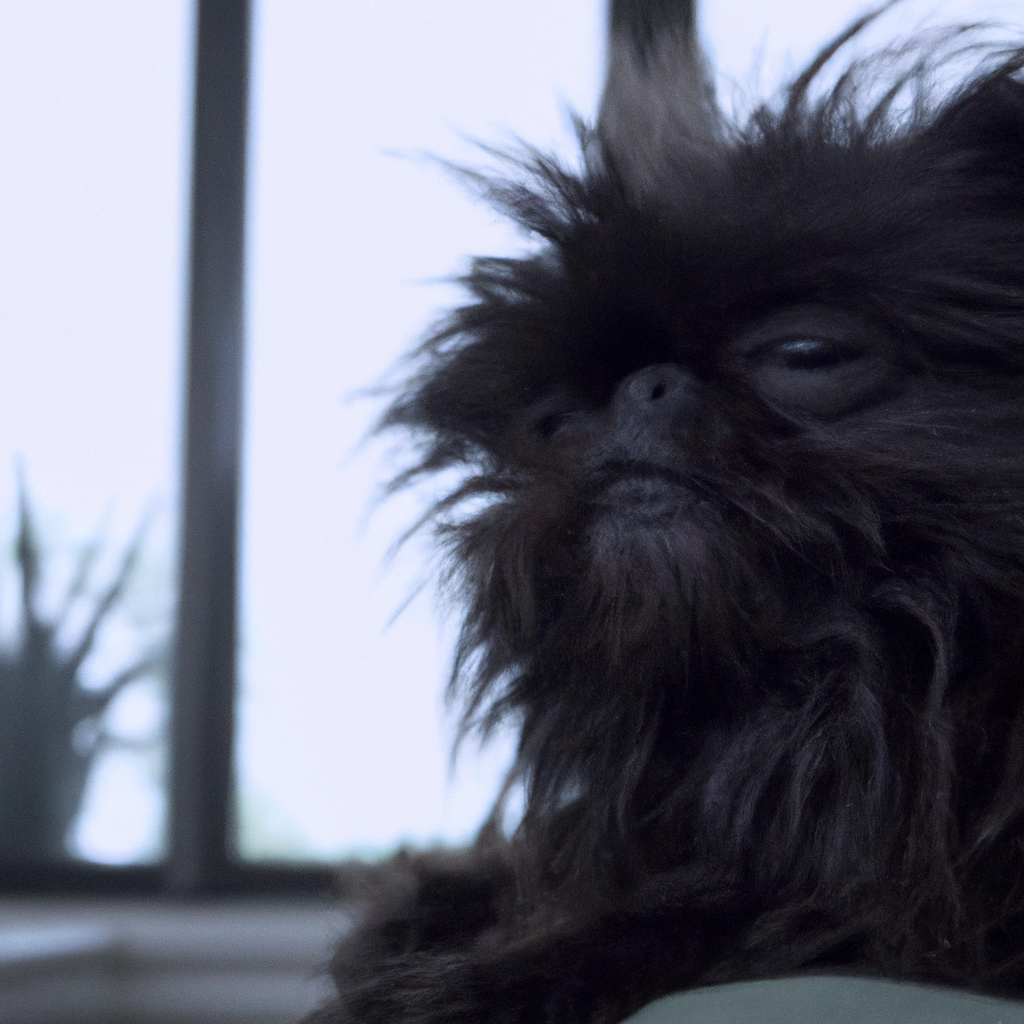
Affenpinschers, with their distinctive monkey-like faces and playful personalities, have long been a favorite among dog lovers. But did you know that these charming little dogs have also made their mark in the world of cinema? Indeed, Affenpinschers have starred in several movies, captivating audiences with their unique looks and endearing antics.
One of the earliest appearances of an Affenpinscher in film dates back to the 1930s. In the movie “Pardon My Pups,” a young Shemp Howard adopts an Affenpinscher, much to the chagrin of his father. The film is a delightful comedy that showcases the Affenpinscher’s mischievous and playful nature. The dog’s antics provide much of the film’s humor, and it’s clear that the Affenpinscher was a natural fit for the silver screen.
Fast forward to the 1990s, and Affenpinschers were once again stealing the show. In the film “The Truth About Cats & Dogs,” an Affenpinscher named Hank plays a pivotal role. Hank’s owner, played by Janeane Garofalo, uses him to strike up a conversation with a handsome stranger, played by Ben Chaplin. Hank’s adorable looks and charming personality make him a hit with both the characters in the film and the audience.
More recently, an Affenpinscher named Gizmo starred in the 2010 film “Gremlins.” Gizmo’s character is a lovable, yet mischievous creature who causes all sorts of chaos when his owner fails to follow the rules for his care. Despite the trouble he causes, Gizmo’s cute and cuddly appearance makes him a favorite among viewers.
But it’s not just in comedies and family films that Affenpinschers have made their mark. In the 2012 thriller “Seven Psychopaths,” an Affenpinscher named Bonny plays a crucial role. Bonny is kidnapped by two dog-nappers, setting off a chain of events that leads to all sorts of mayhem. Despite the film’s dark tone, Bonny’s presence adds a touch of lightness and humor.
These are just a few examples of the many films in which Affenpinschers have starred. Their unique looks, combined with their playful and mischievous personalities, make them a natural fit for the silver screen. Whether they’re causing chaos, striking up conversations, or simply being adorable, Affenpinschers have a way of stealing the show.
But it’s not just their on-screen performances that make Affenpinschers so special. These dogs are also known for their loyalty, intelligence, and affectionate nature. They make wonderful pets and are sure to bring joy to any home.
So, the next time you’re watching a movie and you see a small, monkey-faced dog causing all sorts of mischief, take a moment to appreciate the Affenpinscher. These charming little dogs have made significant contributions to the world of cinema, and they deserve to be recognized for their talent. Whether they’re making us laugh, warming our hearts, or simply being their adorable selves, Affenpinschers are truly stars in their own right.
Iconic Movie Moments Featuring Affenpinschers
Affenpinschers, with their distinctive monkey-like faces and playful personalities, have long been a favorite among dog lovers. But did you know that these adorable little canines have also made their mark in the world of cinema? That’s right, Affenpinschers have starred in several iconic movie moments, stealing the spotlight with their unique charm and undeniable charisma.
One of the most memorable appearances of an Affenpinscher in film is in the 1993 movie “Look Who’s Talking Now.” This family comedy features Rocks, a scruffy street dog voiced by Danny DeVito, who finds a home with the Ubriacco family. While Rocks is not a purebred Affenpinscher, his scruffy appearance and mischievous personality are reminiscent of the breed. His hilarious antics and heartwarming relationship with the Ubriacco family make him a standout character in the film.
Another notable Affenpinscher movie moment comes from the 2001 film “Zoolander.” In this comedy, the Affenpinscher plays a minor but memorable role as the pet of the villainous fashion mogul Mugatu, played by Will Ferrell. The Affenpinscher’s distinctive appearance and comical interactions with Ferrell’s character add a touch of whimsy to the film.
In the 2008 film “As Good as Dead,” an Affenpinscher named Max plays a pivotal role. Max is the beloved pet of the main character, Andy, and his kidnapping sets the plot in motion. Max’s expressive eyes and endearing personality make him a character that audiences can’t help but root for.
Affenpinschers have also made appearances in several animated films. In the 2010 film “Despicable Me,” one of the villain’s henchmen is seen with an Affenpinscher. The dog’s small size and distinctive appearance make it a perfect fit for the film’s quirky, exaggerated style. Similarly, in the 2016 film “The Secret Life of Pets,” an Affenpinscher is seen among the group of pets who live in the same apartment building as the main characters.
While these are just a few examples, Affenpinschers have made numerous appearances in films over the years. Their unique appearance and playful personalities make them a natural fit for the silver screen. Whether they’re playing the loyal companion, the comic relief, or even the catalyst for the plot, Affenpinschers have a knack for stealing the show.
But it’s not just their on-screen appearances that make Affenpinschers so beloved. These dogs are known for their loyal, affectionate nature and their playful, energetic personalities. They’re small in size, but they have big hearts and even bigger personalities. Whether they’re starring in a movie or simply being a beloved family pet, Affenpinschers have a way of leaving a lasting impression.
So, the next time you’re watching a movie, keep an eye out for these adorable little canines. You never know when an Affenpinscher might steal the scene. And who knows? You might just find yourself falling in love with these charming, charismatic dogs. After all, as any Affenpinscher owner will tell you, once you’ve shared your life with one of these dogs, you’ll never forget them.
A Look Back at Affenpinschers in Film History
Affenpinschers, with their distinctive monkey-like faces and playful personalities, have long been a favorite among dog lovers. But did you know that these charming little dogs have also made their mark in the world of film? That’s right, Affenpinschers have been stealing scenes and winning hearts on the silver screen for decades. Let’s take a stroll down memory lane and remember some of the most memorable Affenpinscher performances in film history.
Perhaps the most famous Affenpinscher in film is the lovable little dog who starred in the 1939 classic, “The Wizard of Oz.” Although Toto was played by a Cairn Terrier, the film’s producers initially considered using an Affenpinscher for the role. The Affenpinscher’s expressive face and lively personality made it a strong contender, but in the end, the role went to a Cairn Terrier. Nevertheless, the Affenpinscher’s brush with fame in “The Wizard of Oz” helped to raise its profile and popularity.
Fast forward to the 1980s, and Affenpinschers were once again making waves in Hollywood. In the 1987 film “Project X,” an Affenpinscher named Willie stole the show with his comedic antics and endearing personality. Willie’s performance was so well-received that he was even nominated for a Patsy Award, the animal equivalent of an Oscar.
In the 1990s, Affenpinschers continued to charm audiences with their appearances in films like “Babe” and “101 Dalmatians.” In “Babe,” an Affenpinscher played the role of Duchess, the farm’s resident house dog. The film’s producers were so impressed with the Affenpinscher’s performance that they decided to feature the breed more prominently in the sequel, “Babe: Pig in the City.”
Meanwhile, in “101 Dalmatians,” an Affenpinscher named Fidget played the role of one of Cruella de Vil’s henchdogs. Despite being a villain, Fidget quickly became a fan favorite thanks to his expressive face and comedic timing.
More recently, Affenpinschers have been featured in films like “The Secret Life of Pets” and “Isle of Dogs.” In “The Secret Life of Pets,” an Affenpinscher named Leonard is one of the main characters. Leonard’s laid-back personality and love of heavy metal music made him a hit with audiences.
In “Isle of Dogs,” an Affenpinscher named Boss plays a key role in the film’s plot. Boss’s bravery and loyalty make him a standout character, and his performance has been praised by critics and audiences alike.
Looking back, it’s clear that Affenpinschers have made a significant impact on film history. From their early days in Hollywood to their recent appearances in blockbuster films, these little dogs have proven time and again that they have what it takes to shine on the silver screen. Their expressive faces, lively personalities, and natural comedic timing make them perfect for a variety of roles, from comedic sidekicks to brave heroes.
So, the next time you’re watching a movie and a charming little dog steals the scene, take a closer look. It just might be an Affenpinscher, continuing a long and proud tradition of film excellence.
The Legacy of Affenpinschers in the Movie Industry
Affenpinschers, with their distinctive monkey-like faces and playful personalities, have long been a favorite among dog lovers. But did you know that these charming little dogs have also made quite a name for themselves in the movie industry? Indeed, the legacy of Affenpinschers in the film world is a fascinating tale that deserves to be told.
Let’s take a trip down memory lane, back to the golden age of Hollywood. It was during this time that Affenpinschers first began to make their mark on the silver screen. One of the earliest examples is the 1939 film “The Women,” where an Affenpinscher named Toto played a small but memorable role. Despite the film’s star-studded cast, Toto managed to steal the show with his adorable antics and expressive face.
Fast forward to the 1950s, and Affenpinschers were once again in the spotlight. This time, it was a dog named Mr. Binks who captured the hearts of moviegoers in the film “The Littlest Hobo.” Mr. Binks’ performance was so well-received that he even received a special mention in the film’s credits, a rare honor for a canine actor.
But perhaps the most famous Affenpinscher in film history is Max, who starred in the 1993 movie “The Good Son.” Max’s performance was nothing short of extraordinary, and he quickly became a beloved figure in pop culture. His expressive eyes and unique facial expressions made him a natural in front of the camera, and his scenes were often the highlight of the film.
In more recent years, Affenpinschers have continued to make appearances in films and television shows. For instance, an Affenpinscher named Gizmo played a key role in the 2003 film “Elf,” bringing a touch of canine charm to this holiday classic. And let’s not forget about the Affenpinscher who played the role of Precious in the 2001 film “Legally Blonde.” This little dog’s performance was so memorable that it even inspired a line of merchandise!
The legacy of Affenpinschers in the movie industry is a testament to the breed’s versatility and charm. These dogs are not just cute and cuddly; they are also talented actors who can hold their own against their human co-stars. Their expressive faces and playful personalities make them a natural fit for the camera, and their performances have brought joy to audiences around the world.
So next time you’re watching a movie and you spot an Affenpinscher, take a moment to appreciate the rich history of this breed in the film industry. From Toto in “The Women” to Max in “The Good Son” to Gizmo in “Elf,” Affenpinschers have proven time and time again that they are more than just adorable pets; they are also stars in their own right. And as long as there are movies to be made, you can bet that Affenpinschers will continue to shine on the silver screen.
Celebrating Affenpinschers: The Unforgettable Canine Stars of Film
Affenpinschers, with their distinctive monkey-like faces and playful personalities, have long been a favorite among dog lovers. But did you know that these charming canines have also made their mark in the world of film? Indeed, Affenpinschers have starred in several movies, captivating audiences with their unique looks and endearing antics.
One of the earliest appearances of an Affenpinscher on the silver screen was in the 1940 film “The Biscuit Eater.” This heartwarming tale of friendship between a young boy and his dog featured an Affenpinscher named Patsy, who stole the show with her expressive eyes and mischievous behavior. Patsy’s performance was so memorable that it helped to boost the popularity of the breed, leading to a surge in Affenpinscher adoptions.
Fast forward to the 1990s, and Affenpinschers were once again in the spotlight. This time, it was a lovable Affenpinscher named Max who captured the hearts of moviegoers in the film “The Mask.” Max’s role was small but significant, and his comedic timing was impeccable. His scenes with Jim Carrey were some of the most memorable in the film, and Max quickly became a fan favorite.
In the 2000s, an Affenpinscher named Gizmo made a splash in the film “Gremlins.” Gizmo’s adorable face and playful antics made him an instant hit with audiences. His role in the film was so popular that it led to a surge in demand for Affenpinscher puppies. Gizmo’s success also paved the way for other Affenpinschers to take on roles in films and television shows.
More recently, an Affenpinscher named Bella starred in the 2018 film “Dog Days.” Bella’s role was significant, as she played a pivotal part in the storyline. Her performance was praised for its authenticity and emotional depth, proving once again that Affenpinschers are not just cute faces, but talented actors as well.
But it’s not just their acting skills that make Affenpinschers such beloved film stars. Their unique looks and personalities also play a big part. With their wiry coats, expressive eyes, and playful demeanors, Affenpinschers are naturally charismatic. They have a knack for stealing the spotlight, whether they’re playing a comedic sidekick or a heartwarming companion.
Moreover, Affenpinschers are known for their intelligence and trainability, which makes them ideal for film roles. They can learn and perform complex behaviors on cue, making them a favorite among animal trainers in the film industry.
In conclusion, Affenpinschers have made significant contributions to the world of film. From Patsy in “The Biscuit Eater” to Bella in “Dog Days,” these unforgettable canine stars have left an indelible mark on cinema. They’ve not only entertained audiences with their performances, but also raised awareness and appreciation for the breed. So, the next time you watch a movie featuring an Affenpinscher, take a moment to appreciate the talent and charm of these remarkable dogs.In conclusion, Affenpinschers have made notable appearances in films, showcasing their unique characteristics and charm. Their presence in cinema not only entertains audiences but also raises the breed’s profile and popularity.
